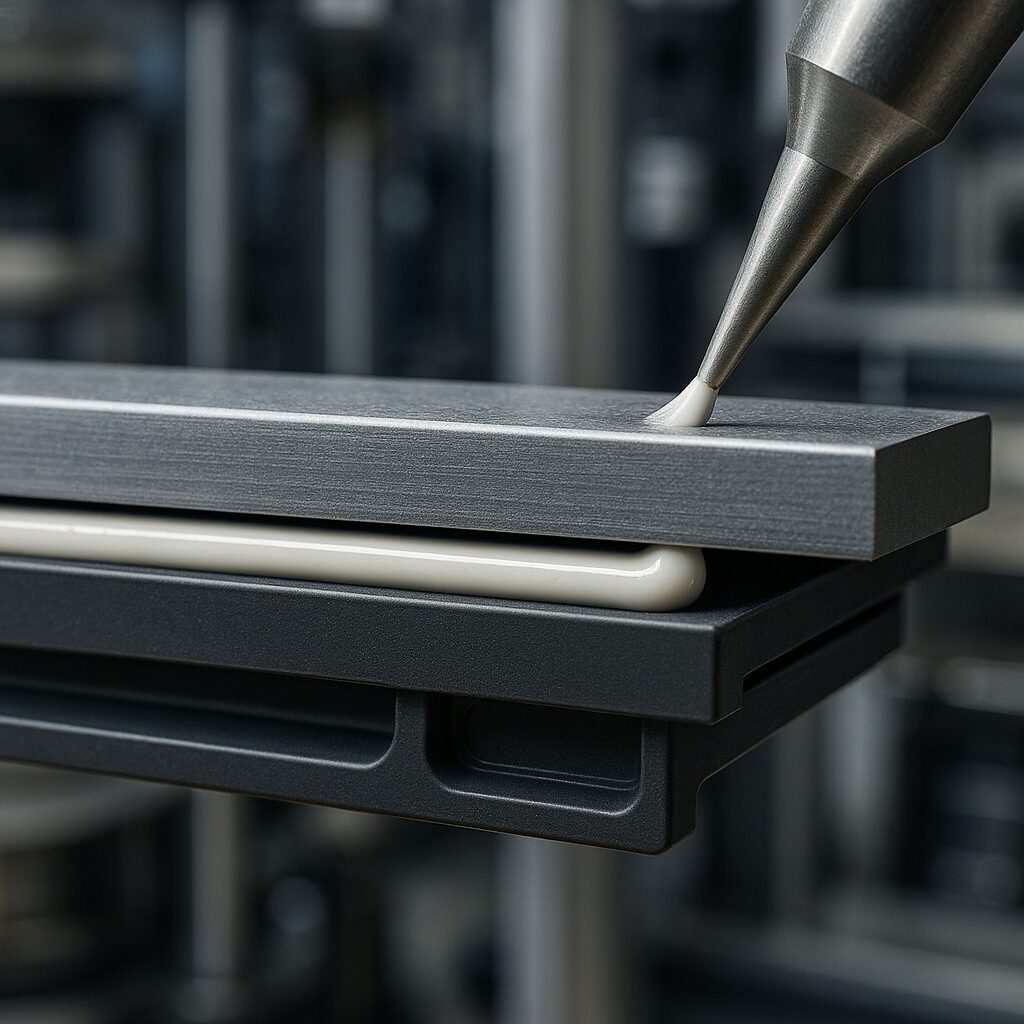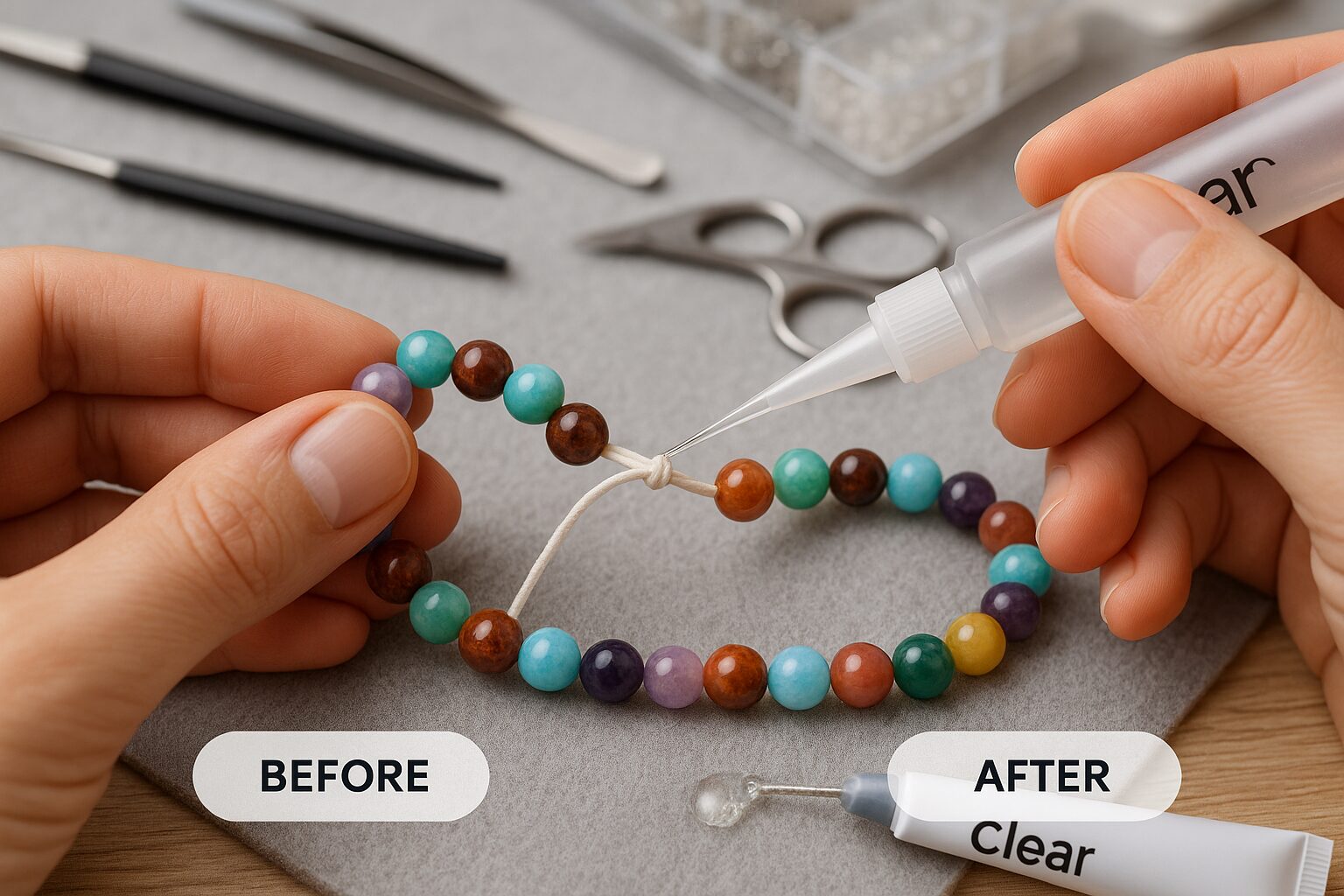In modern manufacturing, the adhesive you choose is more than just a bonding agent—it’s a performance-critical component. From aerospace to electronics, using high-quality adhesives in manufacturing ensures stronger bonds, longer product lifecycles, safer assemblies, and lower failure rates. Brands like GH1200 focus on premium adhesive technologies that support efficient, reliable, and scalable production across industries.
What Is the Role of Adhesives in Manufacturing?
Adhesives act as critical bonding agents across nearly every manufacturing sector from automotive and aerospace to electronics, furniture, and medical devices. Even niche industries like packaging and bulk sports and fitness manufacturer in Pakistan rely on high-performance adhesives to ensure durability, precision, and efficient assembly of products under high mechanical stress.
In modern production environments, adhesives:
- Replace mechanical fasteners (bolts, rivets)
- Enable bonding of dissimilar materials (plastic to metal, glass to composite)
- Distribute stress evenly across surfaces
- Improve durability, weight efficiency, and design flexibility
As a result, adhesives are not just “glue”, they are integral to structural integrity, assembly speed, and product performance.
Why Do High-Quality Adhesives Matter?
High-quality adhesives directly influence:
| Factor | Impact of High-Quality Adhesive |
|---|---|
| Structural Integrity | Long-lasting, fail-proof bonding even under stress |
| Production Efficiency | Faster cure times, reduced rework, automated application |
| Product Lifecycle | Greater durability, less degradation in extreme conditions |
| Safety and Compliance | Certified bonding strength, chemical resistance |
| Cost Efficiency (Long-Term) | Fewer failures, lower maintenance, reduced returns |
Poor-quality adhesives lead to premature bond failures, inconsistent performance, and increased warranty claims, undermining your brand and bottom line.
What Defines a High-Quality Adhesive?
Several performance attributes separate industrial-grade adhesives from commodity options:
Consistent Viscosity
Ensures controlled application via syringe, spray, or roll coaters. This reduces waste and ensures bond-line thickness accuracy.
High Shear & Peel Strength
Withstands dynamic loads and vibrations, crucial in automotive and aerospace manufacturing.
Heat, Chemical & Moisture Resistance
Essential for electronics, outdoor equipment, and industrial applications exposed to harsh environments.
Precise Cure Control
Whether it’s UV-curable, two-component epoxy, or pressure-sensitive, high-quality adhesives offer predictable cure times, which is key to assembly line planning.Compatibility with Substrates
Advanced adhesives are engineered to bond a range of materials:
- Metal to composite
- Plastic to glass
- Rubber to aluminum
High adhesion with low surface energy materials (like PTFE or HDPE) is a mark of a superior formulation.

Which Industries Depend Most on High-Quality Adhesives?
1. Automotive & Aerospace
- Structural bonding of lightweight materials (carbon fiber, aluminum)
- Noise, Vibration, Harshness (NVH) control via acoustic foams and adhesive laminates
- Crash-resistance relies on shear strength and impact endurance
2. Electronics & Semiconductors
- Adhesives in PCB assembly, chip packaging, and EMI shielding
- Must endure thermal cycling, soldering temps, and moisture ingress
3. Medical Devices
- Biocompatibility is essential (ISO 10993-certified adhesives)
- Used in catheter assembly, wearable sensors, and surgical instruments
4. Construction & Panels
- High-performance structural adhesives for cladding, windows, and insulation
- Must resist UV, rain, and wind loads
How Does Adhesive Quality Affect Manufacturing Efficiency?
| Process Area | Impact of Low-Quality Adhesives | Impact of High-Quality Adhesives |
|---|---|---|
| Bonding Time | Unpredictable cure leads to slowdowns | Fast, consistent cure accelerates output |
| Rework & Scrap | More bond failures, higher material waste | Fewer defects and repairs |
| Automation Compatibility | Clogs, dripping, uneven flow | Smooth flow, compatible with robotic arms |
| Health & Safety | Excess fumes, poor handling | Low-VOC, operator-friendly formulations |
High-end adhesive brands provide data sheets, MSDS, application guides, and substrate compatibility charts, which reduce guesswork and standardize production.
What Certifications or Standards Should You Look For?
When evaluating adhesive quality, look for these certifications:
- ISO 9001 / IATF 16949: Ensures production consistency
- REACH / RoHS compliance: Non-toxic, eco-friendly composition
- ASTM D1002 / D3163: Measures shear and tensile strength
- UL 94 / FAR 25.853: Fire resistance for electrical and aerospace uses
- FDA / USP Class VI: Medical-grade bonding and sterilization safety
Choosing adhesives with traceable compliance ensures both product quality and regulatory approval across borders.
How Do You Evaluate and Select the Right Adhesive?
A structured adhesive selection process reduces risk and improves product integrity:
1. Define the Substrate Materials
Match adhesive chemistry (epoxy, acrylic, polyurethane, silicone) with the surface energy and porosity of materials.
2. Assess Environmental Conditions
Identify expected temperature ranges, humidity levels, UV exposure, and chemical contact.
3. Determine Mechanical Loads
Understand if the bond must resist shear, peel, tension, or cyclic stress.
4. Consider Application Method
Manual, automated, or robotic application will impact the adhesive form (liquid, film, tape) and viscosity.
5. Run Lab Tests and Simulations
Test bond strength (ASTM methods), aging simulations, thermal cycling, and accelerated weathering before full-scale deployment.
What Are the Consequences of Using Low-Grade Adhesives?
Poor adhesive choice results in:
- Product recalls due to delamination or joint failure
- Customer dissatisfaction from premature wear
- Warranty costs and reputational damage
- Legal liability in safety-critical applications (e.g., medical or aerospace)
Real-world examples include:
- Electronic components short-circuiting from moisture penetration
- Medical tubing detaching mid-procedure
- Panels falling off from façade structures due to poor weather bonding
These failures often stem from saving a few cents per unit at the adhesive level.
How Do High-Quality Adhesives Impact Sustainability?
Advanced adhesives contribute to greener manufacturing by:
- Enabling lightweight construction (reduces fuel use in transport sectors)
- Replacing mechanical fasteners, reducing material usage
- Allowing disassembly for recycling or end-of-life separation
- Offering low-VOC formulations to reduce emissions and workplace exposure
Sustainable adhesives align with ESG (Environmental, Social, Governance) goals and modern supply chain expectations.
Future Trends: What’s Next in Adhesive Innovation?
- Smart Adhesives
- Bond under specific conditions (e.g., pressure, temperature, pH)
- Self-healing materials that reform bonds after damage
- Bio-based Formulations
- Renewable inputs like lignin, soy protein, and starch are replacing petrochemicals
- Conductive and Thermally Functional Adhesives
- Enable power electronics, wearables, and next-gen battery packs
- On-Demand Curing Systems
- UV or microwave-activated adhesives that cut cycle times
As product complexity grows, adhesive systems evolve to meet tighter specs and more demanding use cases.
Final Words: Why Choosing the Right Adhesive Matters
In high-performance manufacturing, adhesives aren’t a minor detail—they’re a core contributor to product quality, safety, and operational efficiency. Choosing high-quality adhesives in manufacturing reduces long-term costs, ensures compliance, and builds trust in the end product.
From structural integrity to environmental resistance and production speed, the right adhesive delivers measurable value. Cutting corners at this stage can lead to failure not just of materials, but of your entire manufacturing system.
Frequently Asked Questions
1. What makes an adhesive high quality for industrial use?
A high-quality industrial adhesive provides consistent viscosity, strong shear and peel strength, fast and controlled curing, and resistance to heat, chemicals, and moisture. It also performs reliably across various substrate types.
2. How do adhesives improve manufacturing efficiency?
They reduce the need for mechanical fasteners, speed up assembly with fast curing, support automation, and minimize rework or scrap from weak bonds. This results in better throughput and cost control.
3. Which industries require the highest quality adhesives
Sectors like automotive, aerospace, electronics, medical devices, and construction rely heavily on top-grade adhesives for safety-critical and long-lasting bonding.
4. Are high-quality adhesives more sustainable?
Yes. Many advanced adhesives are low-VOC, support lightweight material bonding (fuel savings), and are engineered for recyclability. They contribute to ESG and green manufacturing goals.
5. What are the risks of using low-grade adhesives in production?
Low-grade adhesives can cause bond failures, product recalls, higher warranty claims, poor customer satisfaction, and legal liabilities, especially in regulated industries like healthcare or aviation.
6. How do I choose the right adhesive for my manufacturing process?
Evaluate your substrate materials, environmental stressors, required mechanical loads, and application method. Then test adhesive performance under real conditions before full-scale adoption.





